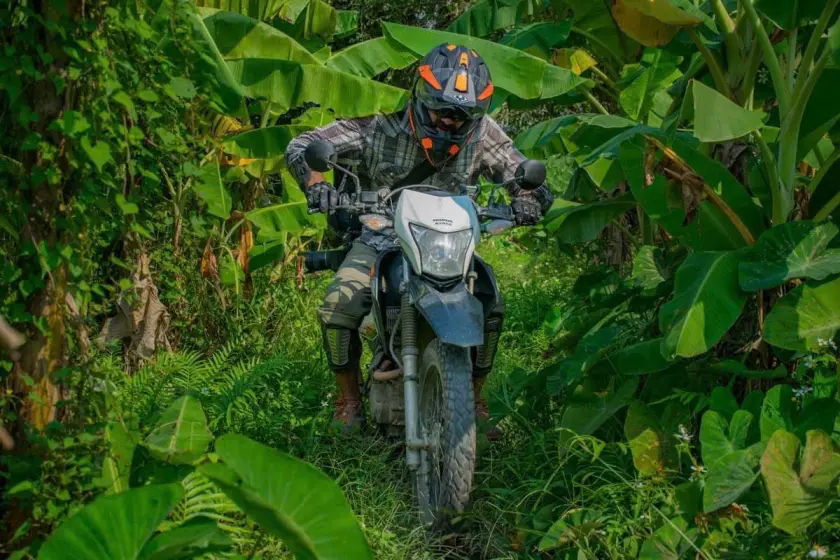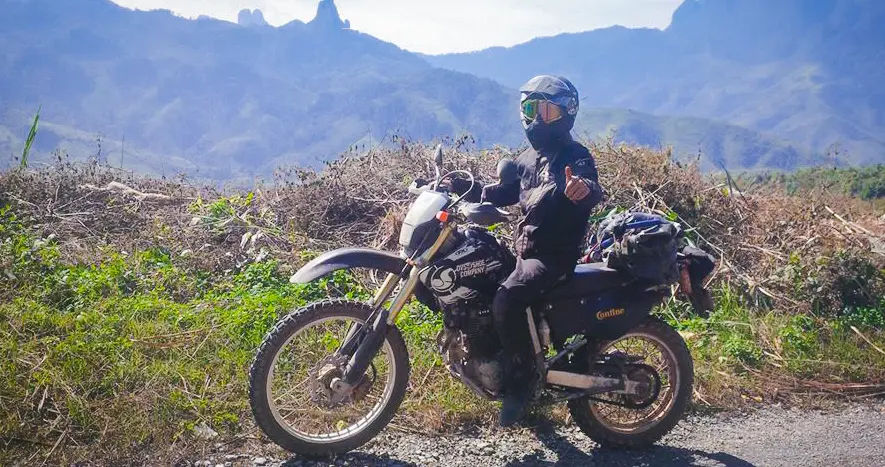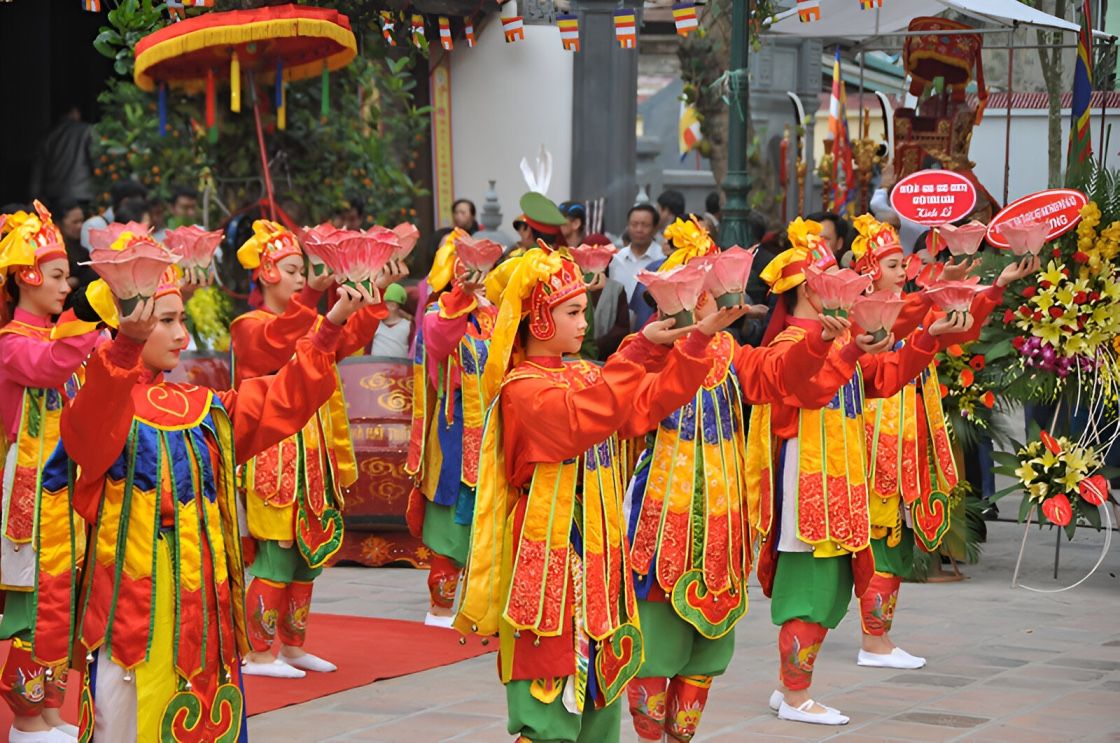
Vietnamese water puppetry in summary, is a unique and vibrant story telling folk art that blends history, legend, and daily rural life—literally bringing it to the surface. Imagine colorful wooden puppets gliding over a shimmering water stage, animated by hidden puppeteers and accompanied by traditional music, fire-breathing dragons, and tales as old as Vietnam’s rice fields. This enchanting art form, known in Vietnamese as múa rối nước, has mesmerized audiences for over a thousand years. Originating in the flooded rice paddies of the Red River Delta, it remains one of Vietnam’s most cherished cultural treasures.
History of Vietnamese Water Puppetry
Over a thousand years ago, during the Ly Dynasty (10th–11th century), farmers in the Red River Delta created water puppetry as entertainment during the rainy season when rice fields were submerged. These flooded paddies became natural stages, where villagers gathered to enjoy stories told through puppets skimming the water’s surface.
Originally, performances celebrated harvests and religious festivals. Far more than simple amusement, water puppetry embodied community spirit and spiritual expression. Generations have kept the tradition alive, earning it recognition as a vital piece of Vietnam’s intangible cultural heritage.
- Check out Vietnam tours & travel packages
- Find out All the Free things to do in Hanoi
How Vietnam Water Puppets Work
The Ingenious Stage and Technique
The magic lies in its technical brilliance. Performances take place in a shallow pool, or sân khấu nước, in front of a pagoda-style backdrop. Puppeteers stand waist-deep behind a screen, skillfully manipulating puppets with long bamboo rods and submerged mechanisms.
- Check out Vietnam culture and traditions
Design and Movement of the Puppets
Carved from lightweight fig wood and painted in bright hues, the puppets are designed to float and move fluidly. Their lifelike motions—whether dancing, swimming, or even dueling—are precisely choreographed.
Traditional Musical Accompaniment
Live traditional music accompanies each performance. Instruments such as the đàn bầu (monochord), drums, flutes, and wooden clappers provide a rich soundscape. Singers narrate the action through melodic chants and songs, weaving music and movement into a seamless storytelling experience.
Continue Your Vietnam Adventure
Already amazed by Vietnam’s traditions? Continue your cultural journey with a Vietnam motorbike tour!
Popular Themes and Characters
At the heart of every show lies powerful storytelling. Performances draw from Vietnamese folklore, village life, ancient legends, and seasonal traditions. You’ll see scenes of farmers planting rice, fishermen casting their nets, and mythical tales passed down for generations.
Uncle Teu, a humorous and wise narrator, typically opens each show with witty commentary. Other recurring figures include dragons, phoenixes, water buffalo herders, and playful animals. Through these characters, the performances reflect values such as community, harmony with nature, and perseverance—all expressed with charm, symbolism, and vibrant creativity.
Where to Watch Vietnam Water Puppets
Although traditional village performances still exist, most travelers experience water puppetry in professional theaters. Here are some of the top places to enjoy this art form:
Thang Long Water Puppet Theatre – Hanoi
Address: 57B Dinh Tien Hoang, Hoan Kiem District, Hanoi, Vietnam
Opening Hours: Daily | Showtimes: 15:00, 16:10, 17:20, 18:30, 20:00
Located near Hoan Kiem Lake, this historic theater is Vietnam’s most famous venue for water puppetry. Since 1969, it has delighted audiences with colorful performances, traditional music, and intricate choreography. With five daily shows, air-conditioned seating, and high demand, booking tickets in advance is strongly recommended.
Vietnam Water Puppet Theatre – Hanoi
Address: 361 Trần Khát Chân, Hai Bà Trưng District, Hanoi, Vietnam
Opening Hours: Tuesday to Sunday | Showtimes: 17:00 and 20:00
This less crowded alternative in Hanoi also serves as a training hub for young puppeteers. It offers both classic and modern adaptations of water puppet stories, occasionally featuring English narration to aid international audiences. Educational programs make it ideal for deeper cultural exploration.
Golden Dragon Water Puppet Theatre – Ho Chi Minh City
Address: 55B Nguyen Thi Minh Khai, District 1, Ho Chi Minh City, Vietnam
Opening Hours: Daily | Showtimes: 17:00 and 18:30
Located in Saigon’s city center, this venue is known for tourist-friendly shows. Performances remain rooted in northern tradition while including brief English introductions. Its convenient location near major attractions makes it a top pick for southern visitors.
Other Noteworthy Venues
- Lotus Water Puppet Theater – 16 Le Thai To, Hanoi | Cozy venue near Hoan Kiem Lake with multiple daily shows.
- Hoi An Theatre – 548 Hai Ba Trung, Hoi An | Seasonal shows aligned with cultural festivals.
- Hue Water Puppet Theatre – 16 Le Loi, Hue | Evening performances showcasing central Vietnamese traditions.
- Vietnam History Museum – 2 Nguyen Binh Khiem, Ho Chi Minh City | Occasional courtyard shows during special events.
Ticket Information
Ticket prices range from 100,000 to 200,000 VND (about $4–$8), depending on location and seating. Most shows last 45–60 minutes. While the narration is often in Vietnamese, the music and visual storytelling transcend language barriers.
What to Expect as a Visitor
Theaters are typically cozy, with tiered seating ensuring good visibility. Even without understanding the language, the vivid expressions and musical narrative make the show accessible and enjoyable. Remember to check each venue’s rules about photography or video recording in advance.
The Modern Revival and Cultural Significance
After facing decline, water puppetry has experienced a strong revival due to government efforts and global interest. While village performances continue, urban theaters have introduced the tradition to international audiences.
Although not yet listed by UNESCO as Intangible Cultural Heritage, water puppetry is frequently showcased at international festivals and cultural exchange programs. It continues to inspire artists in modern theater, education, and even animation.
Travel Tips for Water Puppet Shows
- Best Time to Attend: Evening performances offer the most atmosphere. Arrive 15–20 minutes early for the best seats.
- Booking: During peak tourist seasons, book tickets online or via your hotel.
- Dress Code: Wear light and comfortable clothing, especially in open-air or non-air-conditioned theaters.
- Cash: Bring Vietnamese dong for tickets and souvenirs like puppet figurines.
FAQ: Vietnam Water Puppet
What are Vietnam water puppets?
Vietnam water puppets are traditional wooden figures used in a unique form of folk theatre. Controlled by puppeteers standing in water, they perform stories based on Vietnamese legends, history, and rural life.
Where can I watch Vietnam water puppet shows?
You can watch water puppet shows in cities like Hanoi, Ho Chi Minh City, Hue, and Hoi An. The Thang Long Water Puppet Theatre in Hanoi is the most famous venue.
Are Vietnam water puppet shows in English?
Most shows are in Vietnamese, but the visual storytelling makes them easy to follow. Some theaters also provide English subtitles or printed translations.
How long is a typical water puppet performance?
Most Vietnam water puppet shows last between 45 and 60 minutes. They feature multiple short acts based on folk tales and village life.
Is it worth seeing a water puppet show in Vietnam?
Yes! Watching a water puppet show is a memorable cultural experience and a fun way to learn about Vietnamese heritage, music, and storytelling.
Final Thoughts: Why You Shouldn’t Miss It
Vietnamese water puppetry isn’t just a performance—it’s a living cultural legacy. It embodies the creativity of Vietnam’s rural communities, the richness of its folklore, and the universal power of storytelling through art. Even if you don’t understand a single word, the music, movement, and vibrant visuals will leave a lasting impression.
Whether you’re a culture enthusiast, history lover, or a curious traveler, witnessing a water puppet show is a memorable and meaningful experience. Don’t miss the chance to be swept away by this magical tradition on water.
About the Author
Ms. Thu is a dedicated local travel expert and long-time resident of Hanoi. With over 10 years of experience exploring every corner of Vietnam, she offers travelers authentic local insights and practical guidance.
Source and Accuracy Statement
All information in this blog post has been carefully verified and curated by Ms. Thu. She regularly updates the content to reflect changes in travel regulations, local policies, and practical considerations—ensuring travelers receive current and accurate guidance.











